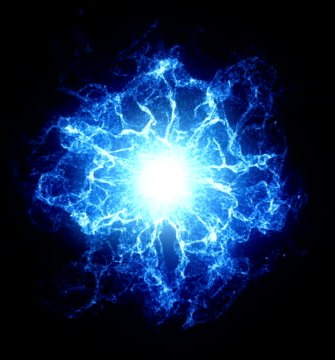
Brief look at some ancient Japanese legends, Shinto Beliefs & Myths about flowers, trees, plants, blossom & nature which may have led to Japan's love of garden art forms.
The history and mythology of Japan gives many indications of the Japanese fascination with nature and the native flowers and plant life. This article discusses just some of these ancient myths and legends of Japan which may well have contributed towards the Japanese love of garden design and garden art forms such as creating miniature landscapes.
The Japanese Garden & Influences of Flowers and Plants in JapanThe traditional Japanese garden is often a landscape in miniature which shows complete awareness of the beauty of the countryside of Japan. Mountains, valleys, waterfalls and rock formations can be discovered in these perfectly proportioned miniature landscapes, often showcasing tiny specimens of the Japanese garden art of producing bonsai trees.
Unlike many other countries flowers play an important role in Japanese history, many of the crests of the ancient families of Japan are ornamented by local flowers and plants. Bamboo is a renowned symbol of good luck which represents tenacity and courage and is used at festivals and also as a family crest. The crest of the Imperial Army was a single cherry blossom and the practice of
Hanami, viewing cherry blossom, is a popular and famed Japanese tradition.
Some Ancient Japanese Legends Involving Flowers & Plant Life Details of just some of the myths and ancient legends of Japan involving flowers and plants are as follows:
The Blossom PrincessThe Blossom Princess was the younger daughter of the Great Mountain Possessor, Oho-yama and married Ninigi, grandson of the
Sun Goddess, who had been sent to Earth. One of their sons, Fire Fade, became grandfather of the first Emperor of Japan, Jimmu Tenno.
Gingko TreeThe spirit or kami of the gingko tree is reputed to care for nursing mothers and tend their supply of milk, the common Japanese name for the gingko tree is the Milk Tree. There are many legends about the tree including a tale of an old and dying gingko tree in Tokyo Park which was revived by pouring cow’s milk around its trunk.
Gingko trees are also reputed to have the quality of loyalty and even on occasions die for their masters. It is a fact that In 1923 when a great fire ravaged the suburbs of Tokyo the only house which was saved had a gingko tree growing over it.
The Legend of the Old Man and the Cherry TreeThe legend of the Old Man and the Cherry Tree is a well known Japanese fable about an old man and his wife whose only amusements were caring for their dog and viewing the cherry blossom in the Spring.
One year, as the couple were walking to view the cherry blossom, their dog began to scratch the ground. The dog eventually managed to dig a large hole where the couple found a heap of golden coins signalling an end to their life of poverty.
An evil neighbor borrowed their dog, hoping it would perform in similar fashion for him. Unfortunately, when no more gold coins were found the neighbor killed the animal. The old couple buried their pet under the cherry tree in their garden and hoped his spirit would inhabit the tree.
Although the old couple were unwilling to cut any branches from their sacred tree they eventually had to prune a branch but they utilised the wood to make a wooden mortar.
There was a bad famine that year and very little rice available to purchase. As the old woman used the wooden mortar for the first time she discovered that the flour created from just a few grains of rice overflowed from the bowl. The dog’s spirit in the cherry wood mortar provided the couple with a never-ending food supply. The generous old couple used their magical wood mortar to provide the village inhabitants with a supply of food through the famine.
Of course, it was not long before the jealous neighbor heard of this and tricked the old couple into lending him their wooden mortar. Unfortunately, as the neighbor could only produce a mass of stinging insects when he used the mortar, he burnt it.
The old man sadly collected the ashes of his mortar and threw them onto the dog’s grave under the garden cherry tree. Although it was not the season for cherry trees to bloom, the tree immediately came into blossom. The old man collected up the rest of the ashes from the mortar and spent the rest of his life causing trees to come into bloom out of season by sprinkling the magical ashes.
Cucumber and the KappaThe humble cucumber is renowned in Japanese folklore as protection against the evil machinations of the creatures called Kappa. As the water dwelling Kappa love cucumbers it is possible to placate them by throwing cucumbers which have been named for family members and friends into the waters where they live. These evil creatures are then forced to protect those people that have been named and can never cause them any harm.
http://dawn-denmar.suite101.com/shinto--ancient-japanese-legends-about-flowers-a212916




 Είθε στους δρόμους της ουσίας σου να πορευθείς και στα μυστικά απόκρυφα αρχεία της ψυχής σου...
Είθε στους δρόμους της ουσίας σου να πορευθείς και στα μυστικά απόκρυφα αρχεία της ψυχής σου...  Είναι άπειρες οι κατευθύνσεις στο Άπειρο Σύμπαν… Το ταξίδι μαγικό και ατελείωτο… Έχεις πολλά να χαρτογραφήσεις…
Είναι άπειρες οι κατευθύνσεις στο Άπειρο Σύμπαν… Το ταξίδι μαγικό και ατελείωτο… Έχεις πολλά να χαρτογραφήσεις… 

